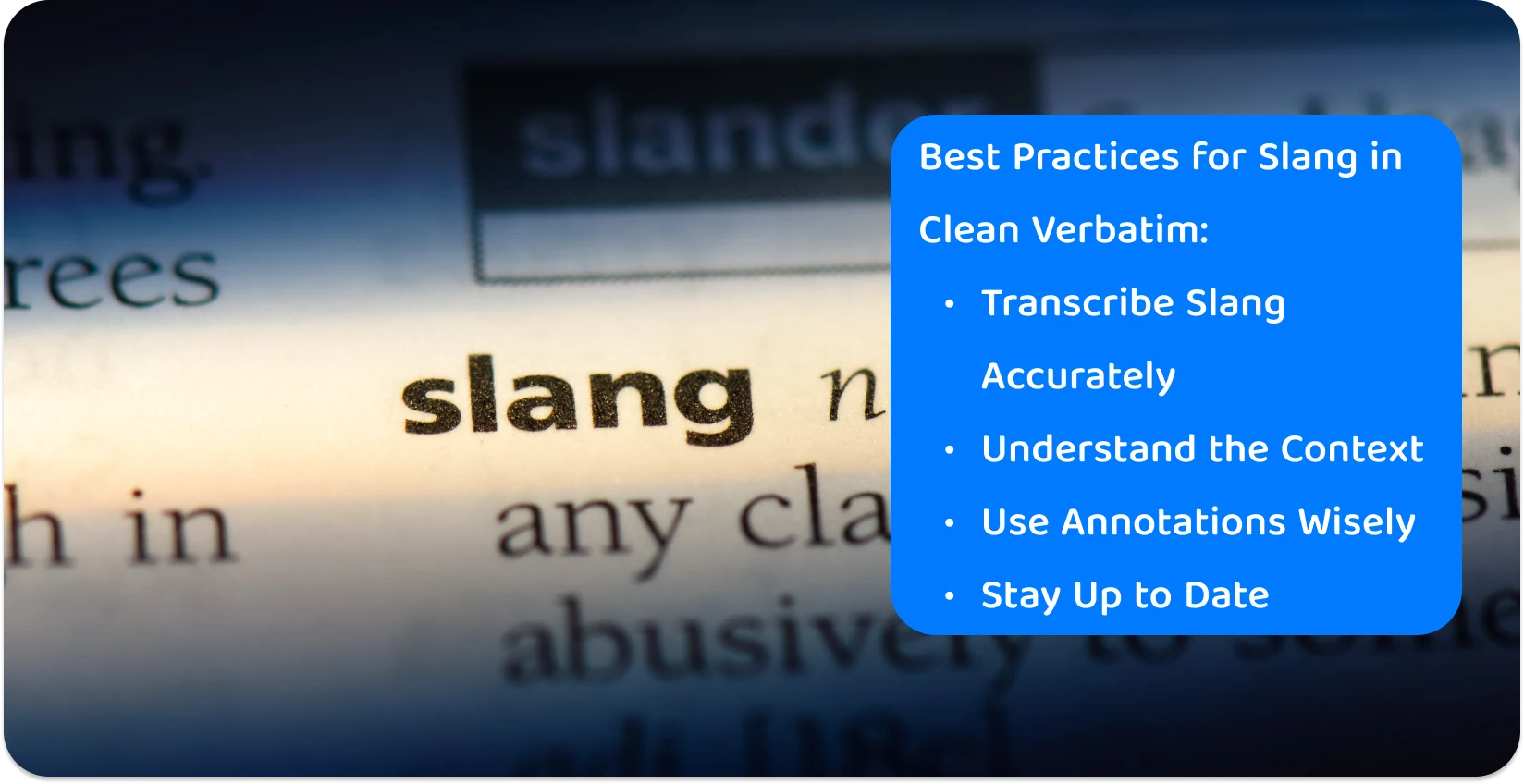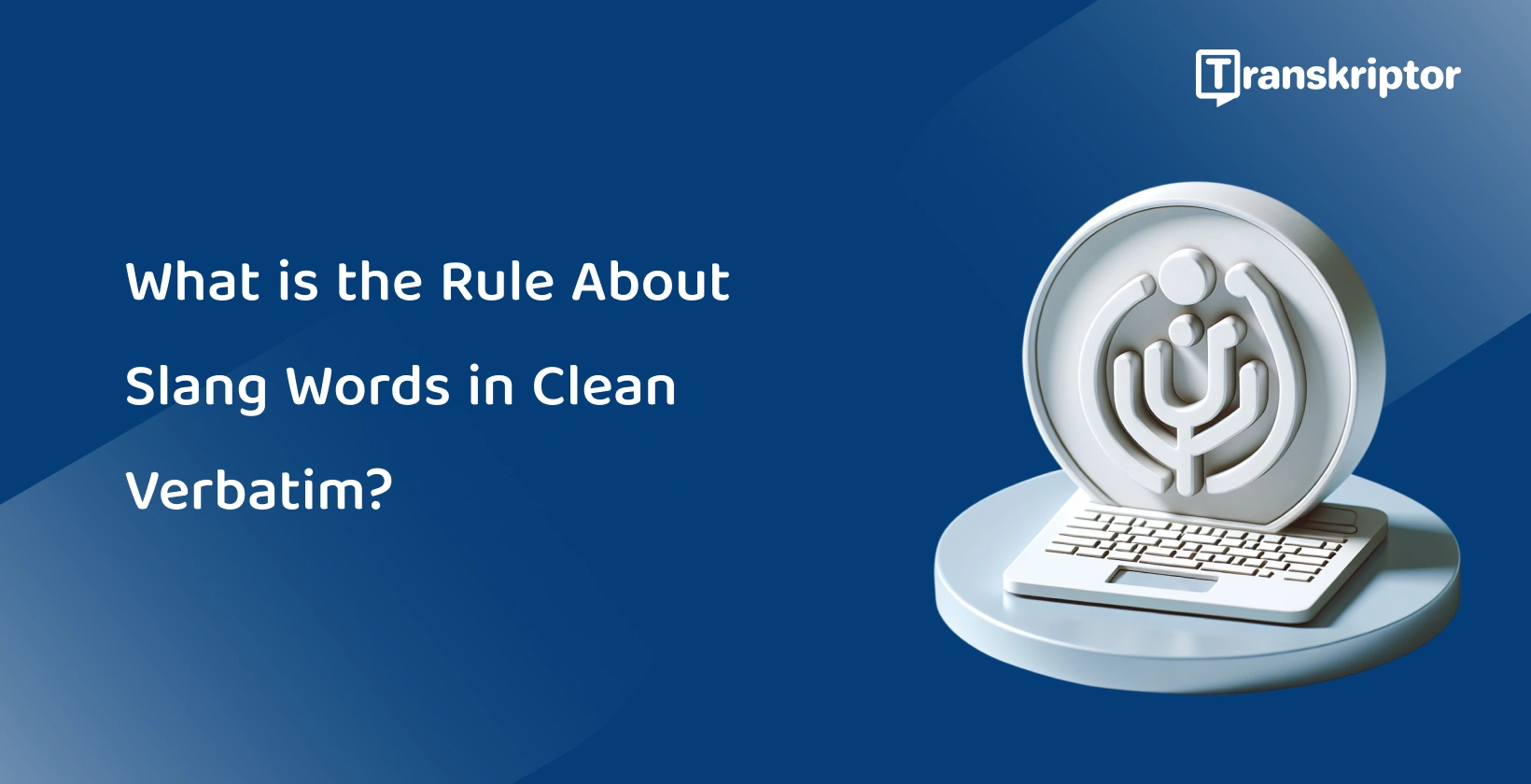So, what do the experts say when it comes to transcribing slang language or transcribe numbers ? Let's take a look.
Defining Clean Verbatim and Its Purpose
Clean verbatim transcription is more than just a method of converting audio to text; it's a meticulous approach designed to strike a harmonious balance between being true to the original recording, while also ensuring that the resulting transcript is accessible and readable, as outlined in our clean verbatim style guide . This style also meticulously captures the essence of the spoken word, carefully transcribing it with precision while strategically omitting filler words, false starts, and various non-essential sounds that can clutter the text and detract from its main message.
Despite these omissions, clean verbatim goes to great lengths to retain the unique language style of each speaker, including the use of slang and idiomatic expressions, which can be vital for preserving the original message's authenticity and tone.
Rules and Guidelines for Handling Slang in Clean Verbatim
When transcribing slang words in clean verbatim, the primary rule is to maintain the speaker's intent and voice without sacrificing the transcript's clarity. This means that slang is transcribed as is, without alteration or censorship, unless it detracts from the overall readability, or unless it’s deemed inappropriate for the transcript's intended audience, just as music transcription captures the essence of musical works.
Addressing Client Specifications and Preferences
Your client's needs are perhaps the most important factor to consider when it comes to determining how to handle slang in transcription; for example, some clients may prefer a more sanitized version of their audio, with slang minimized or explained, while others may want a transcript that's as close to the original speech as possible, slang included. Clear communication with the client about their preferences and the purpose of the transcript is essential before beginning the transcription process.
Balancing Verbatim Accuracy and Readability
The challenge in transcribing slang lies most notably in striking the right balance between verbatim accuracy and readability; slang that is specific to a particular region, culture, or age group may not be understood by all readers, which means that in such cases, you may need to add a brief explanation in brackets or choose a more universally understood term to ensure a more universal comprehension. Again, all of this is going to depend largely on the client's specifications.
Challenges and Solutions in Transcribing Slang
One of the main challenges in transcribing slang is ensuring that the transcript remains accessible to its intended audience. This can be particularly tricky when dealing with highly localized slang or phrases that have multiple meanings. A solution to this challenge is to use footnotes or a glossary section at the end of the transcript to explain the slang terms, thus maintaining readability while preserving the original speech's flavor, just as it is crucial when handling repetitions in verbatim transcription.

Best Practices for Slang in Clean Verbatim
To ensure the best outcomes when transcribing slang in clean verbatim, consider these best practices:
- Transcribe Slang Accurately: Always transcribe slang words as they are spoken, as this helps to maintain the speaker's authenticity and voice, just as it is essential to follow the clean verbatim approach."
- Understand the Context: The meaning of slang can vary widely depending on the context in which it's used; a deep understanding of the subject matter - as well as of the speakers' backgrounds - can greatly help you accurately capture the intended meaning.
- Use Annotations Wisely: When necessary, feel free to use annotations or footnotes to clarify the meaning of slang for readers unfamiliar with the terminology - but you might want to clarify such modifications with the client beforehand.
- Stay Up to Date: Language evolves rapidly, and so does slang, so it’s a good idea to keep abreast of current usage; this can help you accurately interpret and transcribe slang terms without compromising your finished transcription.
Ultimately, slang enriches our language with color and personality, and while it can pose something of a problem in clean verbatim transcription, there are ways to handle it with care and precision - all while ensuring that your transcripts remain clear and accessible to the intended audience.
So whether you're transcribing a video to text or capturing the essence of a live speech, there’s no one-size-fits all solution; simply speak with your client and let them decide the best course of action. And when in doubt for your own projects, simply follow your judgment; does the slang make the content unreadable, detract from the meaning of the text, or make the transcription incomprehensible? With some common sense and a thorough understanding of the slang terms in question, there’s no reason that this should be an obstacle when it comes to accurate and efficient transcription.

